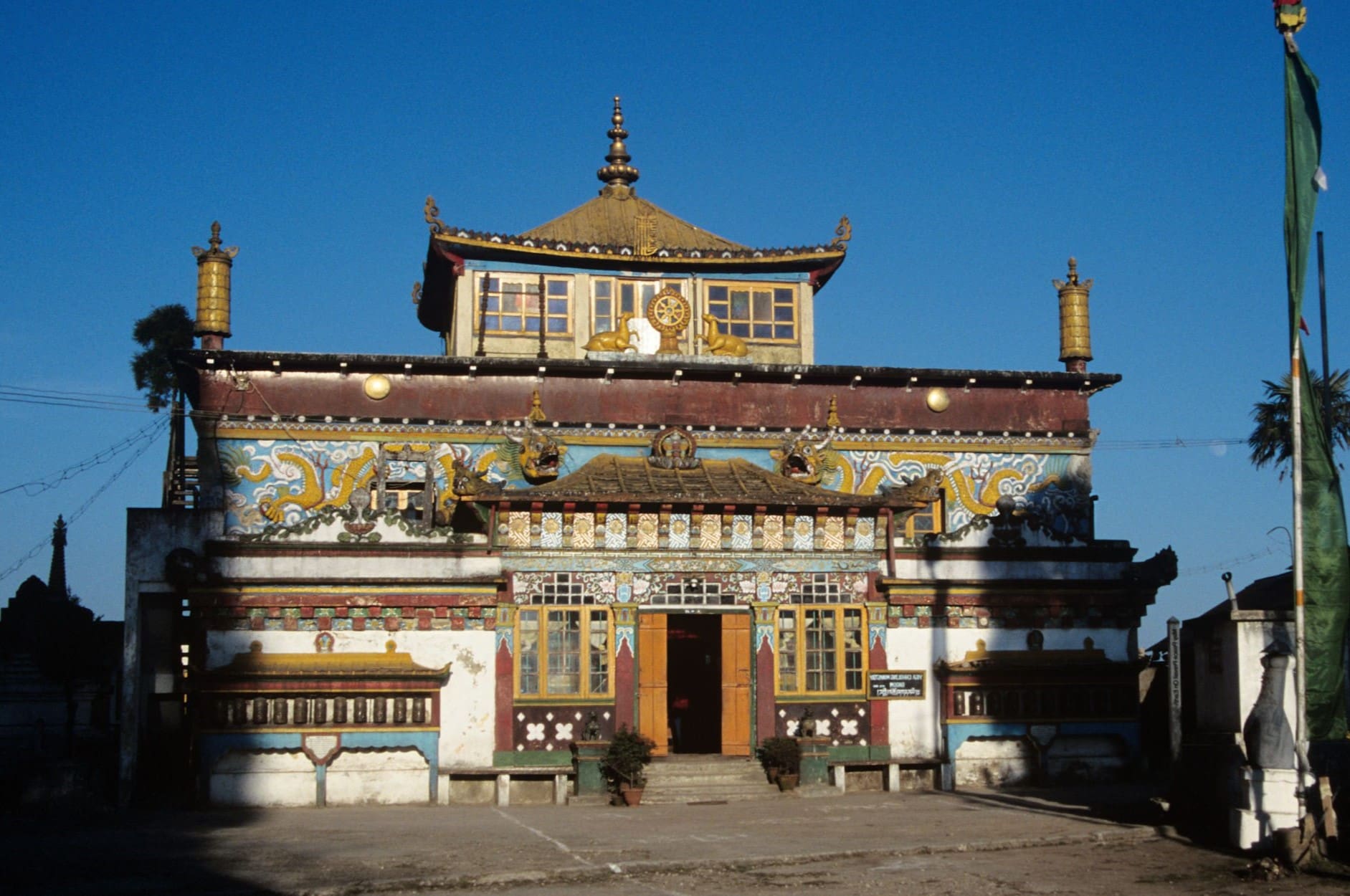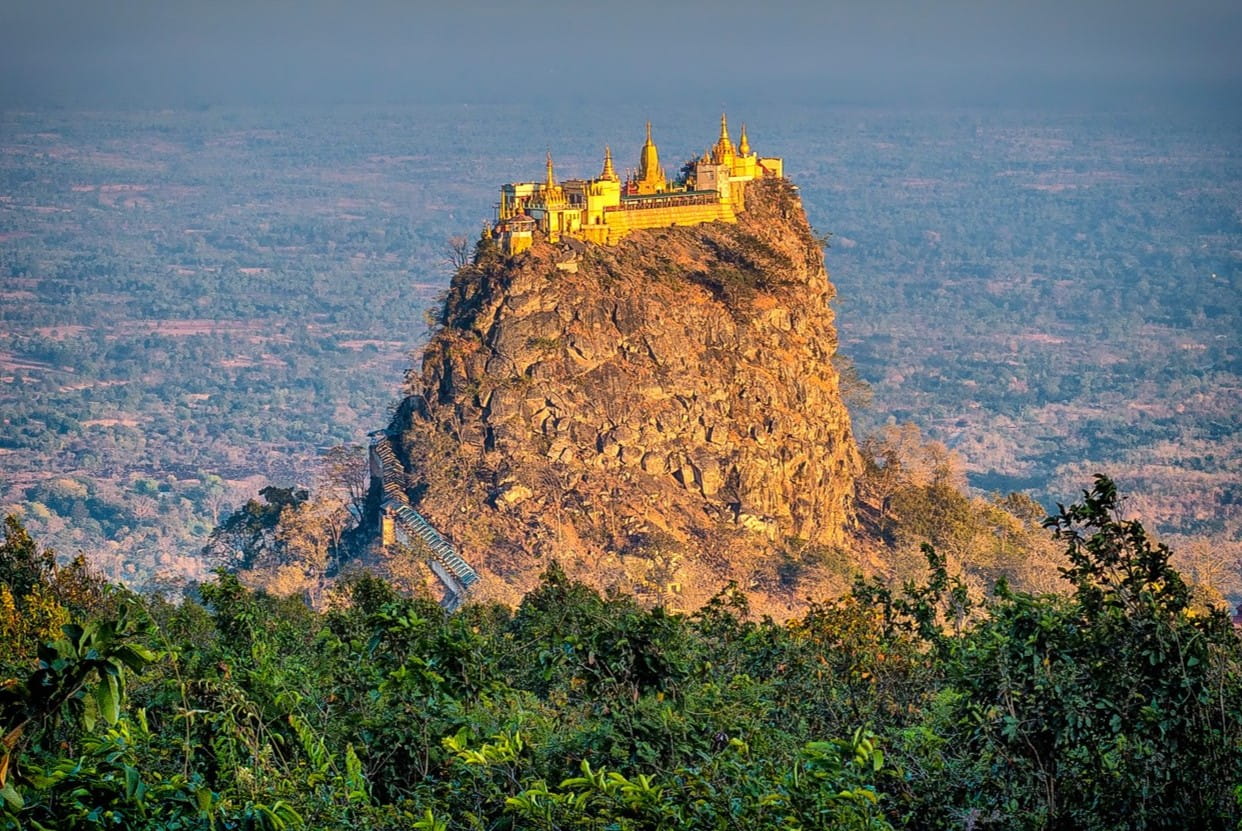
Ghoom Monastery, also known as Yiga Choeling Monastery, is a gem nestled in the hills of Darjeeling, India. Built in 1850, it stands as one of the oldest Tibetan Buddhist monasteries in the region. Why is Ghoom Monastery so special? Its rich history, stunning architecture, and serene atmosphere make it a must-visit. Housing a 15-foot high statue of the Maitreya Buddha, it offers a glimpse into Tibetan culture and spirituality. The monastery also boasts a vast collection of rare Buddhist manuscripts. Whether you're a history buff, spiritual seeker, or just curious, Ghoom Monastery has something for everyone.
Ghoom Monastery: A Spiritual Haven
Ghoom Monastery, also known as Yiga Choeling Monastery, is one of the oldest Tibetan Buddhist monasteries in Darjeeling, India. This serene sanctuary is a treasure trove of history, culture, and spirituality. Let's dive into some fascinating facts about this remarkable place.
-
Established in 1850: Ghoom Monastery was founded in 1850 by Lama Sherab Gyatso. It's one of the oldest Tibetan Buddhist monasteries in the region.
-
Located at 7,407 feet: Situated at an altitude of 7,407 feet, the monastery offers breathtaking views of the surrounding mountains and valleys.
-
Houses a 15-foot statue of Maitreya Buddha: The monastery is home to a 15-foot statue of Maitreya Buddha, also known as the Future Buddha. This statue is a major attraction for visitors.
-
Belongs to the Gelugpa sect: Ghoom Monastery follows the Gelugpa sect of Tibetan Buddhism, which is the same sect as the Dalai Lama.
-
Rich collection of manuscripts: The monastery boasts an extensive collection of rare Buddhist manuscripts and texts, some of which are centuries old.
Architectural Marvels
The architecture of Ghoom Monastery is a blend of traditional Tibetan and modern styles. Its intricate designs and vibrant colors make it a visual delight.
-
Traditional Tibetan architecture: The monastery's design reflects traditional Tibetan architectural styles, with colorful prayer flags and intricate woodwork.
-
Vibrant murals: The walls of the monastery are adorned with vibrant murals depicting various Buddhist deities and scenes from Buddhist mythology.
-
Prayer wheels: Rows of prayer wheels line the monastery's corridors. Spinning these wheels is believed to release prayers and blessings into the world.
-
Golden roof: The monastery's roof is gilded with gold, adding to its majestic appearance.
-
Intricate wood carvings: The doors and windows of the monastery feature intricate wood carvings, showcasing the craftsmanship of Tibetan artisans.
Spiritual Practices and Rituals
Ghoom Monastery is not just a place of worship but also a center for spiritual learning and practice. Monks and devotees engage in various rituals and ceremonies here.
-
Daily prayers: Monks at the monastery perform daily prayers and rituals, creating an atmosphere of peace and serenity.
-
Meditation sessions: The monastery offers meditation sessions for visitors, providing an opportunity to experience inner peace and tranquility.
-
Tibetan New Year celebrations: The monastery hosts grand celebrations during Losar, the Tibetan New Year, with traditional dances, music, and rituals.
-
Butter lamp offerings: Devotees light butter lamps as offerings to the deities, symbolizing the dispelling of darkness and ignorance.
-
Teaching sessions: Monks conduct teaching sessions on Buddhist philosophy and practices, open to both locals and tourists.
Cultural Significance
Ghoom Monastery holds immense cultural significance for the local Tibetan community and Buddhists worldwide. It serves as a hub for preserving and promoting Tibetan culture and traditions.
-
Tibetan language school: The monastery runs a school where young monks learn the Tibetan language, ensuring the preservation of their cultural heritage.
-
Art and craft workshops: Workshops on traditional Tibetan arts and crafts are held regularly, attracting artists and enthusiasts from around the world.
-
Library of Tibetan texts: The monastery's library houses a vast collection of Tibetan texts, making it a valuable resource for scholars and researchers.
-
Cultural exchange programs: The monastery participates in cultural exchange programs, fostering understanding and cooperation between different communities.
-
Support for Tibetan refugees: Ghoom Monastery provides support and shelter to Tibetan refugees, helping them rebuild their lives in a new land.
Natural Beauty and Surroundings
The natural beauty surrounding Ghoom Monastery adds to its charm. The lush greenery, snow-capped peaks, and serene environment make it a perfect retreat for nature lovers.
-
Panoramic views of Kanchenjunga: The monastery offers stunning views of Kanchenjunga, the third-highest mountain in the world.
-
Lush gardens: The monastery is surrounded by lush gardens filled with colorful flowers and medicinal plants.
-
Birdwatching paradise: The area around the monastery is a haven for birdwatchers, with numerous species of birds found in the region.
-
Peaceful ambiance: The tranquil surroundings of the monastery provide a perfect setting for meditation and introspection.
-
Nature trails: Several nature trails around the monastery offer opportunities for hiking and exploring the scenic beauty of the region.
Visitor Information
Ghoom Monastery is a popular tourist destination, attracting visitors from all over the world. Here are some essential facts for those planning a visit.
-
Open to visitors year-round: The monastery is open to visitors throughout the year, with the best time to visit being from October to May.
-
No entry fee: There is no entry fee to visit the monastery, making it accessible to everyone.
-
Photography allowed: Visitors are allowed to take photographs inside the monastery, but it's advisable to seek permission before photographing monks or rituals.
-
Souvenir shop: The monastery has a souvenir shop where visitors can buy traditional Tibetan handicrafts, books, and other items.
-
Guided tours available: Guided tours of the monastery are available, providing insights into its history, architecture, and spiritual practices.
-
Nearby attractions: Other attractions near the monastery include the Batasia Loop, Tiger Hill, and the Darjeeling Himalayan Railway.
-
Accommodation options: Several accommodation options are available near the monastery, ranging from budget guesthouses to luxury hotels.
The Heart of Ghoom Monastery
Ghoom Monastery isn't just a place of worship; it's a treasure chest of history, culture, and spirituality. From its stunning architecture to the ancient manuscripts housed within, every corner tells a story. The monastery's serene environment offers a peaceful retreat from the hustle and bustle of daily life. Visitors can experience the rich traditions of Tibetan Buddhism and witness the monks' daily rituals. The breathtaking views of the Himalayas add to the monastery's allure, making it a must-visit destination for travelers and spiritual seekers alike. Whether you're interested in history, architecture, or spirituality, Ghoom Monastery has something to offer. Its unique blend of cultural heritage and natural beauty makes it a standout landmark. So, next time you find yourself in Darjeeling, don't miss the chance to explore this incredible site. Ghoom Monastery truly captures the essence of tranquility and timelessness.
Was this page helpful?
Our commitment to delivering trustworthy and engaging content is at the heart of what we do. Each fact on our site is contributed by real users like you, bringing a wealth of diverse insights and information. To ensure the highest standards of accuracy and reliability, our dedicated editors meticulously review each submission. This process guarantees that the facts we share are not only fascinating but also credible. Trust in our commitment to quality and authenticity as you explore and learn with us.


